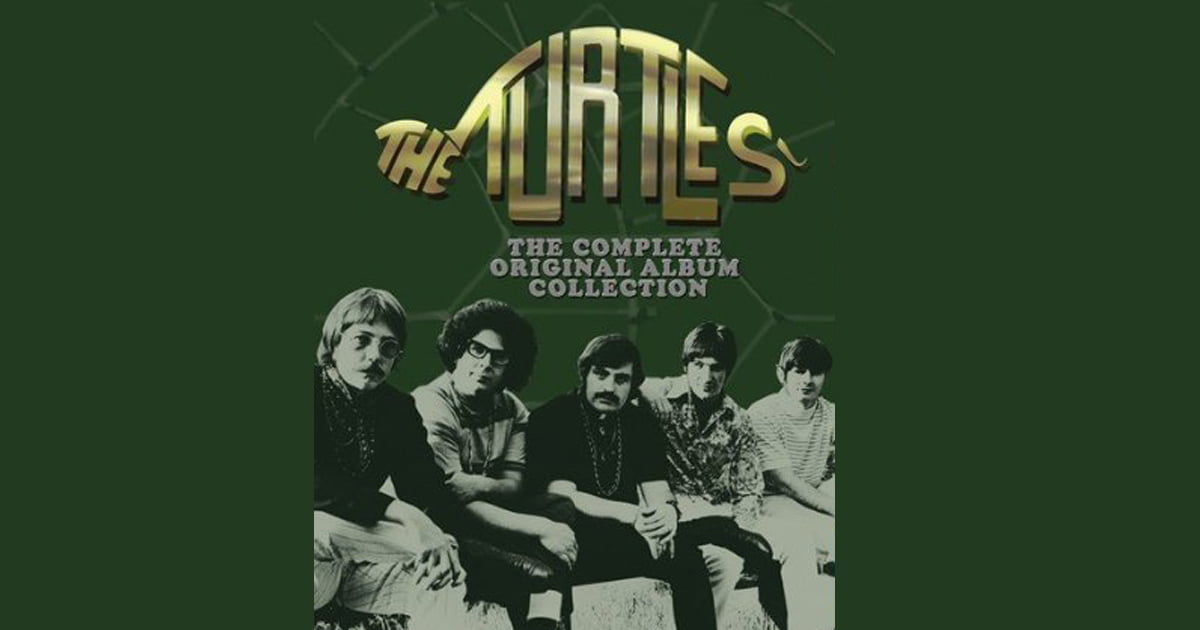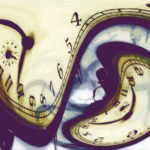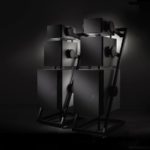It’s the time of year for saving money!
Perhaps the best part of getting all the Turtles albums reissued properly on CD from the original masters and such is that we get to clearly revisit all this wonderful music that, frankly, has been virtually invisible to the general public for far too long.
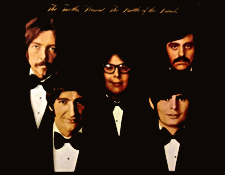 I mean… if you are Turtles fan like I am, you probably have all the albums on some form of vinyl already. But — unless you were one of those pack rats who hoarded sealed copies of their albums — if you started collecting Turtles records even in the 1970s and 80s (as I did) you know that finding clean copies of these albums is a surprisingly challenging prospect. All of The Turtles early albums were typically well loved and played over and over at parties, mostly on average teen aged hi fi systems pf the period (automatic changers, heavy tonearms, sapphire or worse styli, etc.).
I mean… if you are Turtles fan like I am, you probably have all the albums on some form of vinyl already. But — unless you were one of those pack rats who hoarded sealed copies of their albums — if you started collecting Turtles records even in the 1970s and 80s (as I did) you know that finding clean copies of these albums is a surprisingly challenging prospect. All of The Turtles early albums were typically well loved and played over and over at parties, mostly on average teen aged hi fi systems pf the period (automatic changers, heavy tonearms, sapphire or worse styli, etc.).
As much as they loved the music, Turtles fans were rarely kind to their records.
In short, most Turtles albums you find out there in the land of used record collectors shops are either scratchy or distorted or both. Yes, I know that there have been some vinyl reissues over the years which I haven’t had the chance to check hear thus far; I admit that I generally try to find original pressings for artists that I like a lot.
That said, all of these CDs included in The Complete Original Album Collection sound real good! Each of the first three albums come in Mono and Stereo mixes — the Mono mixes are generally punchier and more focused than the early hard-panned Stereo mixes of the period.
This does raise the question of whether you even need to keep your original albums now that this CD set is available. If you are not wed to the vinyl LP format, probably not. If you are a fan of the band, you’ll want to hold onto your original albums for the covers and that bit of extra warmth you get when playing an LP.
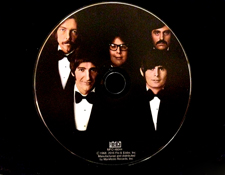 But the hard reality is that these early albums (in particular) were produced by the great Bones Howe and optimized for play over the airwaves on supremely bandwidth-limited AM radio — so even with the CD’s sonic limitations, listening to these recordings digitally is not going to be an earthshaking transition for most listeners.
But the hard reality is that these early albums (in particular) were produced by the great Bones Howe and optimized for play over the airwaves on supremely bandwidth-limited AM radio — so even with the CD’s sonic limitations, listening to these recordings digitally is not going to be an earthshaking transition for most listeners.
In fact, the CDs may well sound a whole lot better than you remember from your old albums and 45s!
There are some very strong reasons why you will want to own these CDs . One of the most significant reasons has to do with how the albums were sequenced and physically where the big hits ended up being placed on the album’s running order.
You see, back in the mid-60s, just when albums were starting to become a listening event for many (as opposed to just buying the hit singles) bands sometimes made artistic choices which at times inadvertently compromised the music.
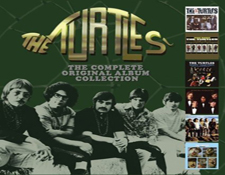 Take, for example, the 1967 Happy Together album, which tucks away the smash hit title track at the end of Side 1, forcing the song to fall prey to the technical woes of an ever condensing concentric track, careening toward the center of the album and frequently getting sonic restraint applied in the disc mastering stages. The song also faces the challenge of tracking angle distortion, which when it came to the aforementioned average teenage record player meant that most original pressings of the album that you find ended up getting fairly mangled. This is also an issue with the hit single from the vinyl pressings of the band’s swan song, Turtle Soup, where “You Don’t Have To Walk In The Rain” is the last track on the album.
Take, for example, the 1967 Happy Together album, which tucks away the smash hit title track at the end of Side 1, forcing the song to fall prey to the technical woes of an ever condensing concentric track, careening toward the center of the album and frequently getting sonic restraint applied in the disc mastering stages. The song also faces the challenge of tracking angle distortion, which when it came to the aforementioned average teenage record player meant that most original pressings of the album that you find ended up getting fairly mangled. This is also an issue with the hit single from the vinyl pressings of the band’s swan song, Turtle Soup, where “You Don’t Have To Walk In The Rain” is the last track on the album.
With this sort of vocal harmony pop music, the last thing you really want to hear is fuzzy, distorted sounding music.
On CD, this is no longer an issue! Its really so nice to hear these pop gems with newfound clarity.
When you hear the song “Happy Together” in Mono, the clarity is wonderful and mostly wide open without the physical limitations of the vinyl format getting in the way of playback. When the band sings in multi part harmony — “Bahh, bahh, bahh, bahh, ba-ba-bah bahh ba-bahh bahhh, ba-ba-bah bahhhhhhhhh!” — you are hearing it as pure and clear as possible with a minimum of distortion.
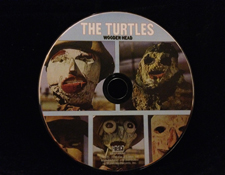 This is an instance where getting a digital version of the recording is a good thing. And until we get a high resolution download or a Blu-ray edition or a 200-gram 45 RPM version of these recordings, these CDs are probably as good as this music is going to get for a while.
This is an instance where getting a digital version of the recording is a good thing. And until we get a high resolution download or a Blu-ray edition or a 200-gram 45 RPM version of these recordings, these CDs are probably as good as this music is going to get for a while.
For those of you who are interested, these recordings were all prepared from the master tapes by renown audio engineer Bill Inglot. The entire collection was supervised by the founding members of The Turtles, Mark Volman and Howard Kaylan (aka Flo and Eddie).
Frankly, I would love to hear this on a high resolution Blu-ray disc in an uncompressed format. Maybe if they sell enough of these boxed sets the band will be able to make those available to us.
]]>On these reissues you hear neat little details in these mixes that were previously somewhat buried. For example, at the 29-second mark of “Happy Together,” just as the second verse is starting up there is a little keyboard ping tucked away in the song. So as they sing “If I should call you up, invest a dime…” a sonic telephone “ring” (if you will) goes off that (to my ear, at least) lost to the vinyl noise floor and compression necessary to create a record.
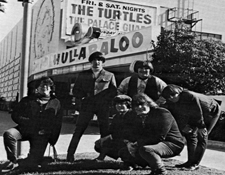 I’ve heard this record a gazillion times since I was a little kid and never noticed that detail. Subtle stuff, no doubt. But those are the little details we tend to overlook which go into making a smash hit a smash hit — stuff that impacts the listener almost subconsciously. That ringing sound sort of gets doubled on the stereo version and is thus a bit less subtle but its still pretty cool nonetheless.
I’ve heard this record a gazillion times since I was a little kid and never noticed that detail. Subtle stuff, no doubt. But those are the little details we tend to overlook which go into making a smash hit a smash hit — stuff that impacts the listener almost subconsciously. That ringing sound sort of gets doubled on the stereo version and is thus a bit less subtle but its still pretty cool nonetheless.
Take a hit like “She’d Rather Be With Me” and you’ll notice that the Mono mix is beefier, with the bass and drums locked in dead center and louder in the mix. This comes at something of a cost as some harmonies get a little overshadowed — the harmonies are more apparent in the somewhat less impactful Stereo mix.
Sonic tradeoffs…
Now that you have both versions available to you at the push of a button (or at the click of a mouse if you are listening on your computer, as I was while writing this review), you can easily explore these variants between the mixes.
Another thing to consider with regards to getting the whole box set — and thus being able to listen to the band’s offerings start-to-finish — is you really get a sense of their growth as performers and the quest for bigger productions. Their early albums were helmed by the great ’60s hit producer Bones Howe but by the time of their 1968 album Battle of the Bands they enlisted former Turtle — and subsequent Monkees’ hit-making producer Chip Douglas (“Pleasant Valley Sunday,” “Daydream Believer,” etc.) — to deliver a bigger, bolder sound in keeping with the times that were rapidly a-changin’.
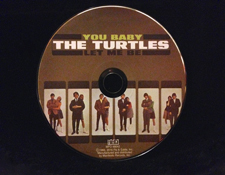 That was a smart call which resulted in two smash hits, “Elenore” and “You Showed Me,” iconic songs of the period. Douglas had in fact done all the arrangements for The Turtles’ biggest hit while he was still in the band, “Happy Together,” so they knew he had a special touch.
That was a smart call which resulted in two smash hits, “Elenore” and “You Showed Me,” iconic songs of the period. Douglas had in fact done all the arrangements for The Turtles’ biggest hit while he was still in the band, “Happy Together,” so they knew he had a special touch.
By their last album, The Turtles had enlisted none other than Ray Davies of The Kinks, having heard his 1968 opus The Village Green Preservation Society. While the Kinks’ album had stiffed, The Turtles recognized its brilliance and perhaps hoped to tap into Davies’ genius. The result, Turtle Soup is the band’s most consistent listen, start-to-finish. It includes two should-a-been-massive hits (“You Don’t Have To Walk In The Rain” and “Love in the City,” both of which charted in the Top 100) as well as some lovely overlooked gems like “How You Love Me.”
With six full albums in the box, there is simply way too much for me to go into here. But trust me when I say there are really cool bonus tracks on these discs. Turtle Soup has 12 extra songs including five demos and a radio spot for the album. Battle of the Bands has almost as many including B-sides (such as the madcap “Umbassa The Dragon”), an alternative take (“Earth Anthem”) and a stereo single version of “Chicken Little Was Right.”
I could go on. But I think you, Dear Readers, probably get the idea that this is a good set to get.
I might even go so far as to say that The Turtles’ Complete Original Album Collection is more fun than a barrel full of … Monkees!
